History and description of cameras "Smena"
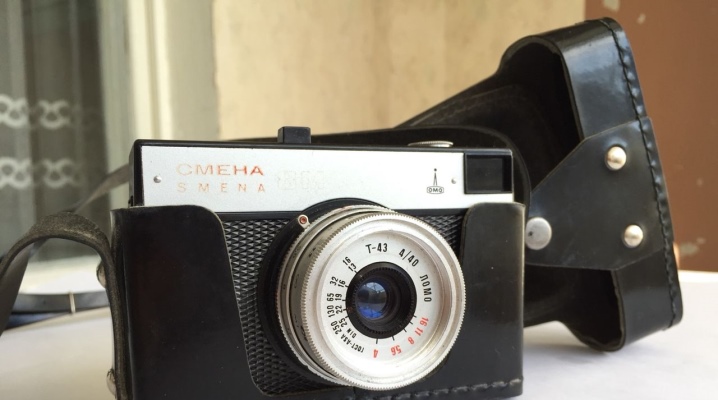
Cameras "Smena" managed to become a real legend for lovers of the film art of shooting. The history of the creation of cameras under this brand began in the 30s of the XX century, and the release of products at the LOMO factories ended after the collapse of the USSR. We will talk about how to use them, what you should know about the Smena-8M, Smena-Symbol, Smena-8 cameras in our article.
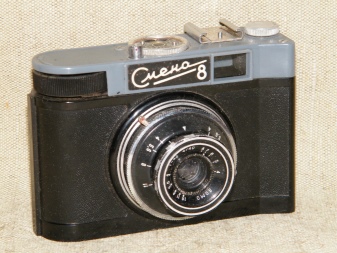
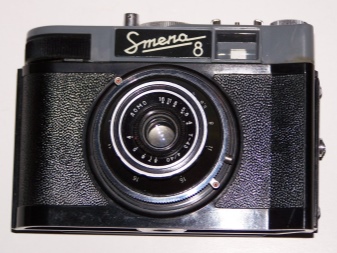
History of creation
The Soviet camera "Smena" can rightfully be considered legendary, it is even listed in the Guinness Book of Records. Products under this Soviet brand were produced by the Leningrad enterprise LOMO (formerly GOMZ) and the Belarusian MMZ. The first model rolled off the assembly line even before the beginning of the Second World War, in 1939. The manufacturer was called the OGPU State Optical and Mechanical Plant until 1962. All "Shifts" of that period were created at GOMZ.
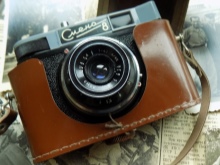
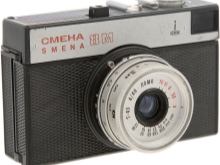
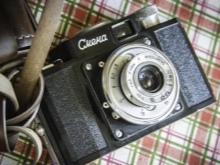
The pre-war versions of the brand's cameras were foldable, very simple in technical terms.
They used a frame viewfinder, had only 2 shutter speeds, and rolled the film before loading. Visually and structurally, the first Smena camera almost completely repeats the Kodak Bantam model. At first it was produced in a black case, then red-brown ones began to be used. The production of the model lasted only 2 years.

After the war, the production of Smena cameras continued. All models, from the first to the last, have a scale type of construction - they are marked with a delimitation of the footage, which allows you to set the sharpness parameters manually, taking into account the distance to the target. This technology was used in the first motion picture cameras.
The cameras "Smena" of the post-war period have the following characteristic features.
- Durable plastic housing. A block was provided on its surface, on which additional accessories for measuring range or a flash lamp can be fixed.
- Compartment for standard photographic material - film type 135. In the cameras of the Smena-Rapid series, Rapid cassettes were used.
- Frame parameters 24 × 36 mm.
- The lens is not an interchangeable type. The optics scheme of the "Triplet" type with indicators from 1: 4.0 to 1: 4.5 was used. The focal length parameters are everywhere 40 mm.
- Lens shutter with a central design type. In different models, there are auto exposures with a minimum indicator from 10 to 200 seconds or from 15 to 250. There is also a manual type "B", in which the shutter lag is set by pressing the button with your finger.
- In the Smena-Symbol, Smena-19, Smena-20, Smena-Rapid, Smena-SL models, film rewinding and shutter cocking are performed together. In other modifications, these functions are separated.
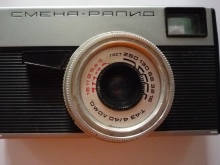
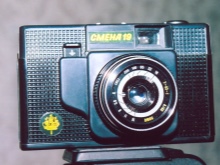

The base model for all post-war vehicles was developed in 1952. On its basis, cameras were produced, equipped with an optical viewfinder - Smena-2, Smena-3, Smena-4. They were produced in Leningrad.
In Belarus, the Smena-M and Smena-2M models were produced for the domestic market.
Since 1963, the brand's cameras have changed their design. Some other technical improvements were made - the viewfinder became a frame, and in the models of the 8th generation film rewind appeared. Models of that period are characterized by the presence of a thickening on the body, focused on holding with the left hand ("Smena-Classic"). This includes cameras from the 5th to the 9th series.
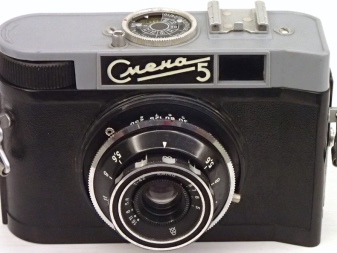
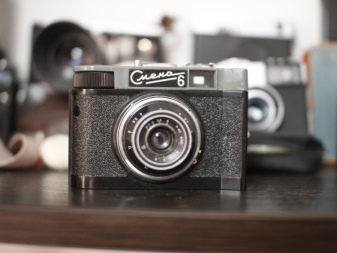
In the 1970s, a redesign was carried out again. Among the noteworthy models of that period is the camera. "Smena-8M" - truly iconic, with over 30 years of re-release. It is these versions that are most often found today in their current form. The modification turned out to be no less relevant. "Change-Symbol" - in it the shutter button was moved to the lens barrel. After restyling, a decade later, it was she who became the basis for the 19th and 20th generation of the brand's cameras.
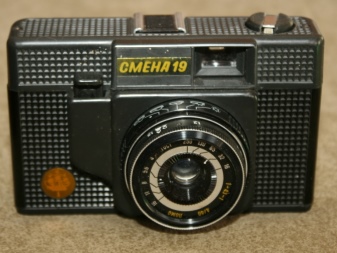
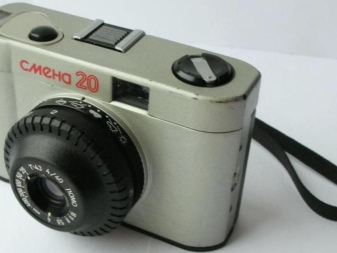
Cameras "Smena", due to their availability, attractive cost, often chosen as training... As part of the popularization of the art of shooting, they were used in circles as a technique for beginners. In addition, the brand's cameras have been quite successfully sold outside the country. They were sold abroad both under the same name and under the brands Cosmic-35, Global-35.
At different times, the Smena cameras equipped with various improvements were produced as prototypes.
They concerned the design of lenses, the presence of a light meter or automatic systems of various types. None of these developments turned into a production model, they remained only in the form of individual copies.
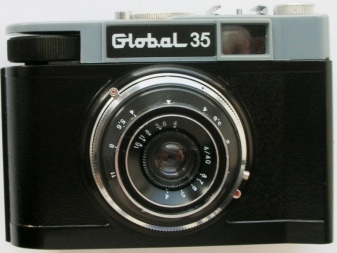
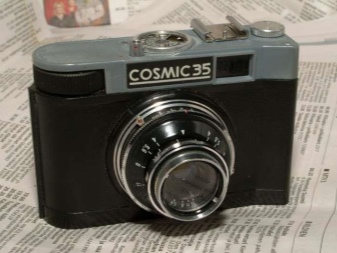
The lineup
Film 35-mm cameras under the Smena brand were produced in a wide model range. Most of them deserve closer scrutiny.
- "Change -1" - the post-war generation did not have a serial number on the case, the year of production for this model can vary from 1953 to 1962. The camera had a fixed-type T-22 triplet lens, versions were produced with and without coating, some of the equipment was equipped with a sync contact. In addition to the central shutter with 6 shutter speeds, a bakelite textured body is used here. The principle of operation of the frame counter is the rotation of the head, it itself is designed in the style of an hour dial, after each countdown, the movement is blocked.
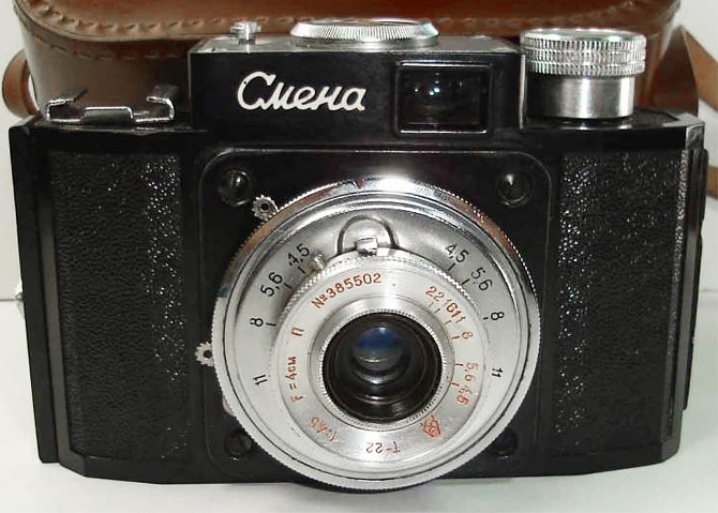
- "Smena-2"... The 3rd and 4th modifications can be attributed to the same category, since all of them were assembled in the post-war classic case, they have similar characteristics - an optical viewfinder, a T22 triplet lens, synchro-contact X. The 2nd generation model is equipped with a flywheel for cocking the shutter, and the later ones have a trigger mechanism. The self-timer is not available on the 3-series.
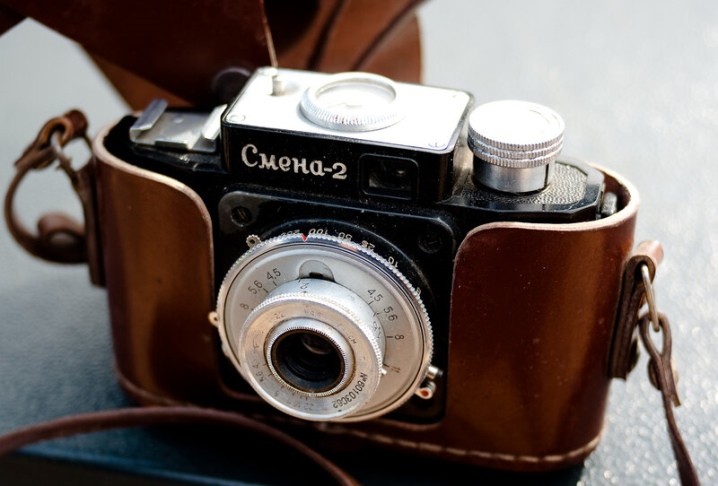
- Smena-5 (6,7,8). All 4 models were produced in a common new body, equipped with a frame viewfinder and a separate hidden flywheel. The 5th series used a T-42 5.6 / 40 triplet lens, the rest - T-43 4/40. Smena-8 and the 6th model had a self-timer. Starting from version 8, the film rewind mechanism is used.
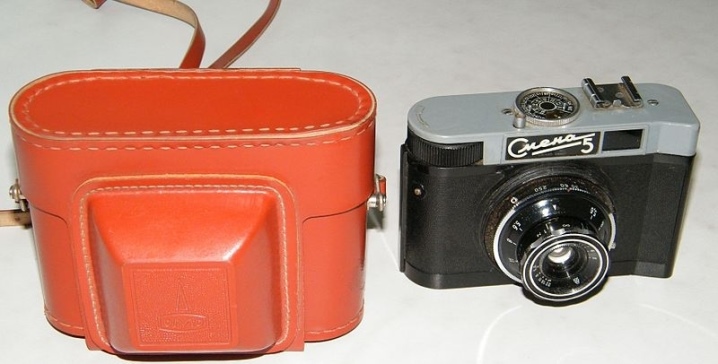
- Smena-8M. The most famous modification was made in Leningrad from 1970 to 1990. This camera was manufactured in a new body, but according to its technical capabilities it corresponded to the Smena-9 model - with 6 exposure modes, including manual, with a separate cocking and rewinding, the possibility of reversing the film. In total, more than 21,000,000 copies were produced.
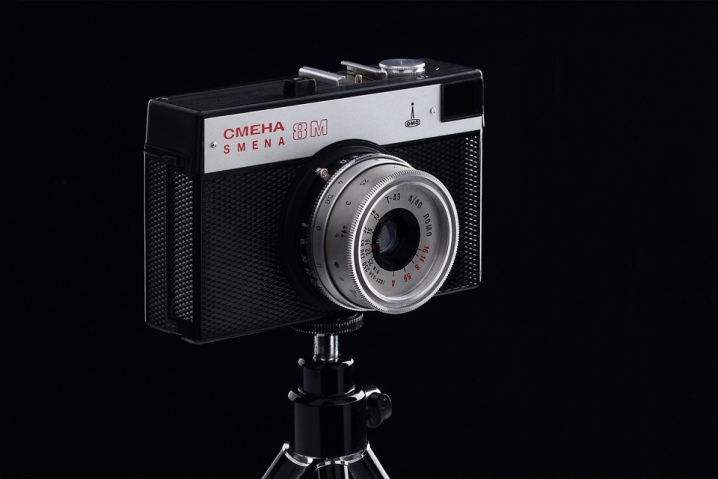
- "Change-Symbol". A model that was distinguished by a trigger type of a shutter cocking, capable of rewinding a film. This version had a shutter button next to the lens, an optical viewfinder. The distance scale provides not only meter marks, but also symbols for choosing a distance when creating portraits, landscapes, and group shots. Exposure is indicated by pictograms of weather phenomena.
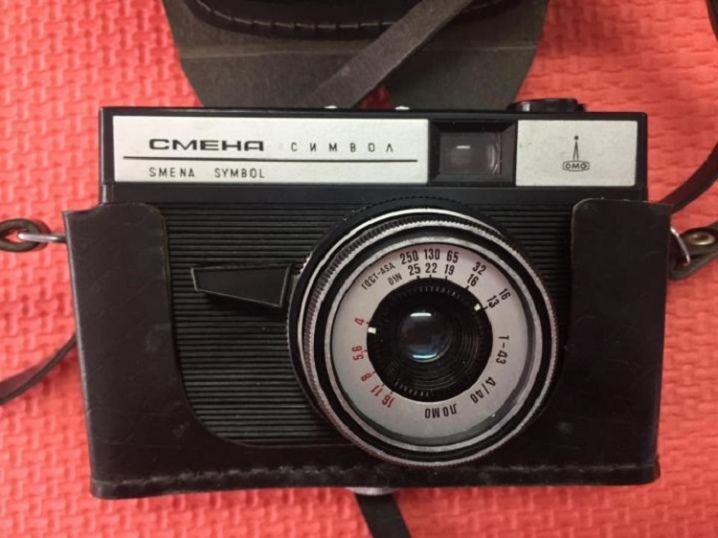
- "Smena-SL"... Modification of the device working with Rapid cassettes, having a clip to which additional accessories could be attached - a flash, an external rangefinder. Outside of the series, there was a variant "Signal-SL", supplemented by an exposure meter. The release of such equipment was carried out from 1968 to 1977 in Leningrad.

In the 80s and 90s of the XX century, LOMO also produced restyled versions of Smena-Symbol cameras with serial numbers 19 and 20.
They received a more stylish design while maintaining their technical characteristics. Smena-35 was the result of a restyling of the 8M version.
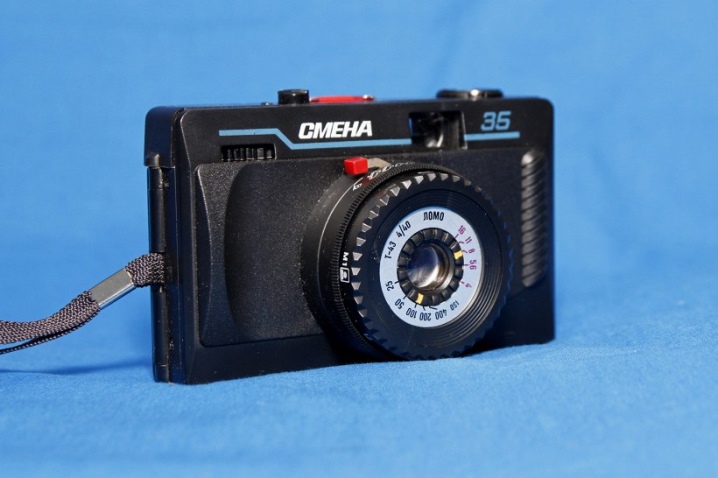
How to use?
Instructions for using Smena cameras were attached to each product. A modern user, without additional help, is unlikely to be able to load film or determine the aperture number for shooting. A detailed study of them will help to understand all the important points.
Film winding and threading
The use of replacement cassettes requires regular film loading. Each such detail consists of:
- reels with a lock;
- hulls;
- 2 covers.
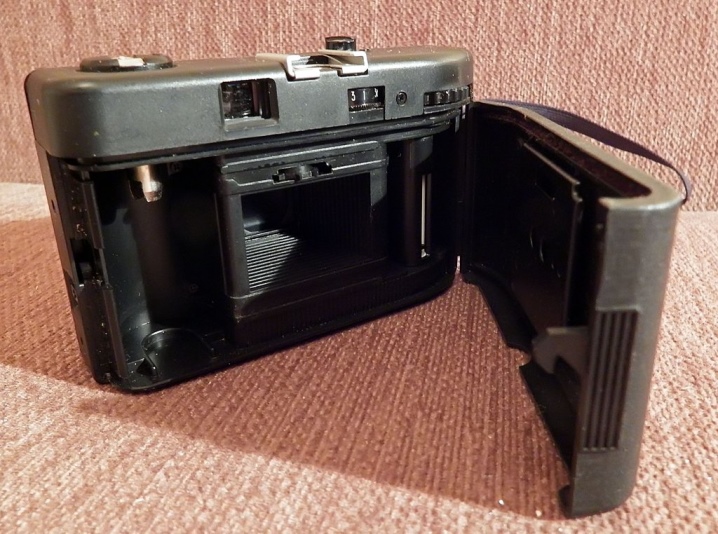
The camera has a removable back cover, you need to detach it to get to the cassette compartment. If there is a rewind function, an empty spool is installed in the right "slot", in the left one will be a block with a film. If it is not there, you will have to charge both cassettes at once - the receiving and the main one. All work with the film is performed in the dark, any contact with the light will make it unusable.
The procedure will be as follows:
- the spool is opened and the edge of the film is trimmed with scissors;
- a spring is slightly pulled from the rod, and a film is laid under it with an emulsion layer down;
- winding, holding the tape by the edges - it must be tight enough;
- immerse the wound coil in the holder;
- put the cover in place, the tape can be pulled into the 2nd reel in the light.
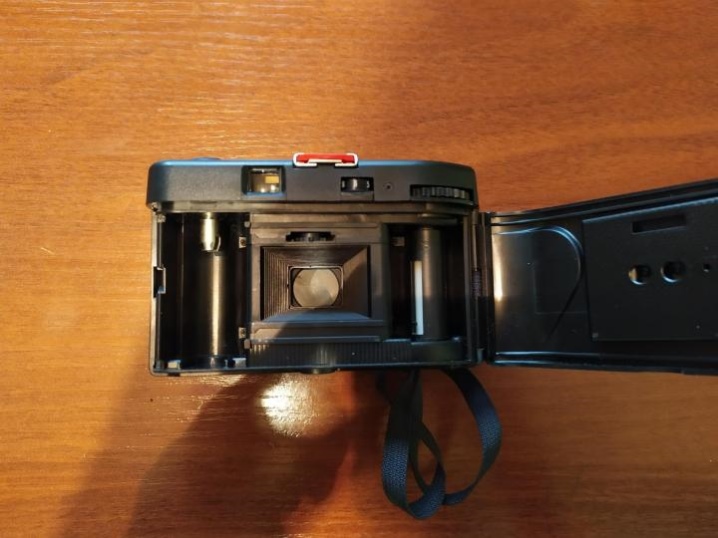
Next, the camera is charged. If auto rewind is available, the cassette locks into the left mount.
In this case, the fork on the rewind head must align with the jumper in the reel.
The edge of the film remaining outside is pulled to the take-up spool, by perforation it engages with the notch of the groove, with the help of the head on the body it is rotated 1 time.
If there is no auto-rewind function, you will have to act differently. The edge of the film is fixed on the 2nd spool immediately, then they are inserted into the grooves in the body. Make sure that the tape is in the field of view of the frame window, is not skewed, and is linked to the frame counter wheel. After that, you can close the case, place the camera in the case and feed through 2 frames that were exposed during winding. Then, by rotating the ring, return the counter to zero.

Shooting
In order to go directly to photographing, you need to set the appropriate parameters. In most popular Smena cameras older than the 5th generation, you can use a symbolic or numeric scale for this. The easiest way is to navigate to the weather icons.
Procedure.
- Select the value of the film sensitivity. This scale is located on the front of the lens. By rotating the ring, you can select the desired values.
- Assess weather conditions. Rotate the ring with pictograms to set the required values.

If you need to operate with numbers, the icons with the image of a clear or rainy sky will correspond to the exposure settings. On the side of the shutter, on its body, there is a scale. By rotating the ring until the desired values are aligned, the desired shutter speed can be specified. The selection of the optimal aperture is performed in the same way. For color film, the best indicators are 1: 5.5.
On the front part of the lens there is a scale, which is used to guide when setting the aperture values. You can change them by rotating the ring.

In order to start shooting with a scale camera, it is imperative to choose the distance to the subject.
In the presence of the modes "portrait", "landscape", "group photo", this process is easier. You can also manually set the footage on a special scale. The frame boundaries are determined by the viewfinder. Once the desired view is obtained, you can cock the shutter and gently press the shutter release button. The snapshot will be ready.
After turning the head until it stops, the film will rewind 1 frame. At the end of the material in the cassette, you need to remove the 2nd block from the case or rewind the spool if the cassette is used only by 1.
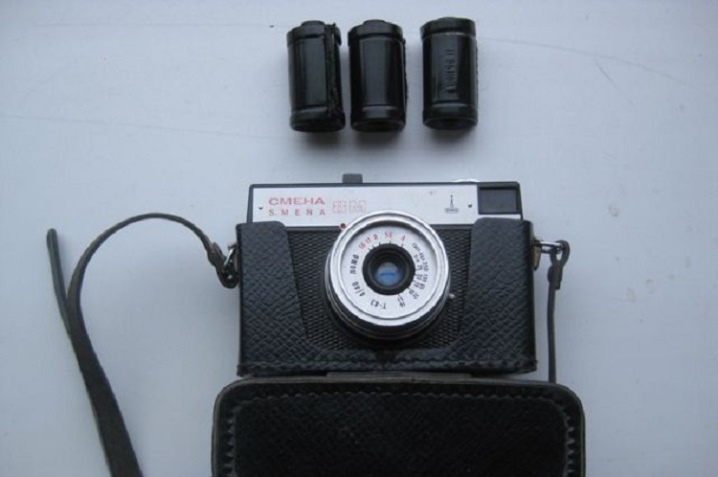
Photos taken with a camera
Examples of pictures taken by Smena devices, allow you to appreciate all the possibilities of the camera in landscape and artistic photography.
- With subtle, lifelike colors and accurate accents, you can turn a simple tit shot into a shot you want to look at.

- The modern urban landscape captured with the Smena camera is not inferior to photographs taken with digital cameras.
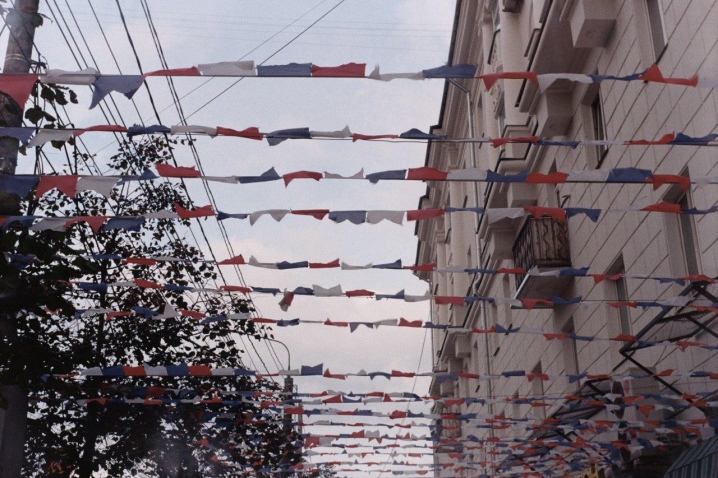
- Still life in the interior looks very picturesque, retaining the chosen retro style, including through the use of a 35 mm camera.
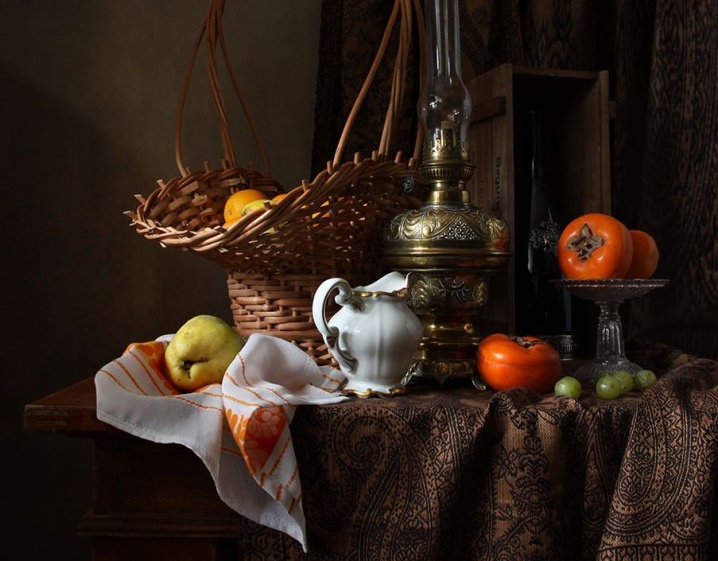
An overview of the Smena camera, see below.













The comment was sent successfully.